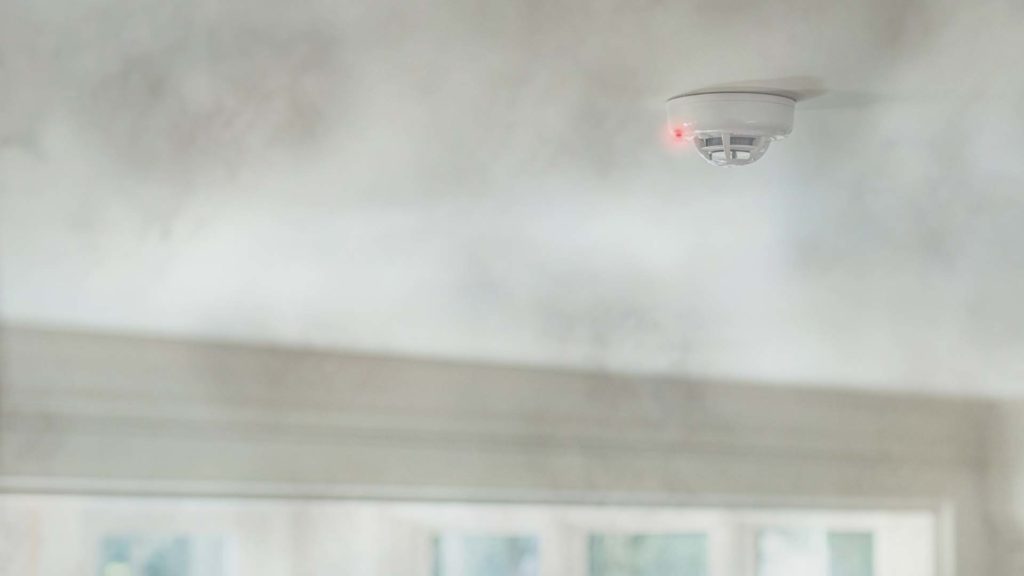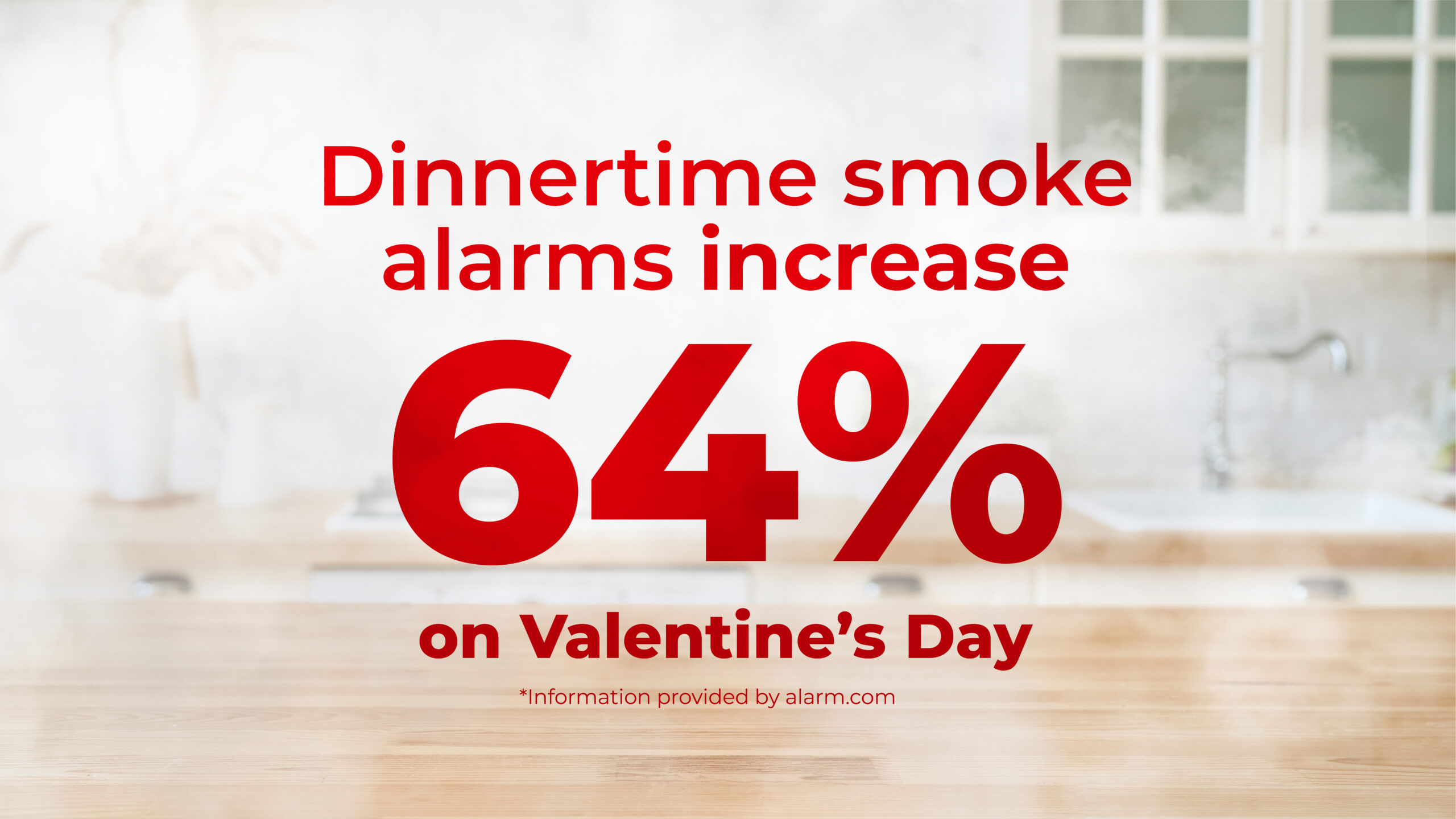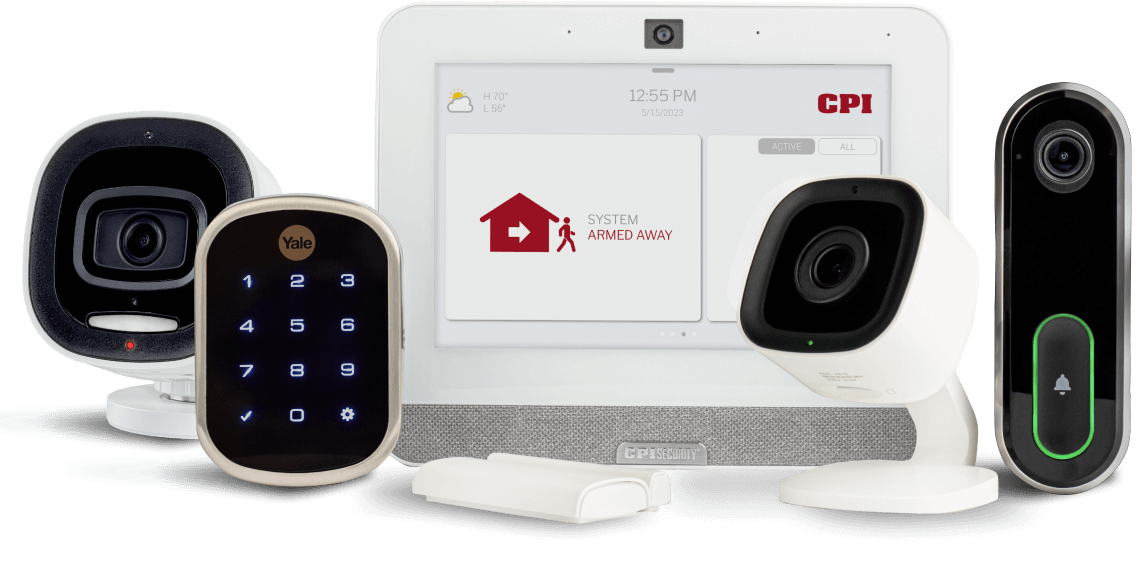Smoke and carbon monoxide detectors are two of the most important safety devices in your home.
- According to the National Fire Protection Association, the risk of dying in a home fire is 55% lower in homes with a working smoke detector.*
- At the same time, the Center for Disease Control says that a carbon monoxide detector can help keep your family from being one of the 430 people to die of accidental carbon monoxide poison each year.**
Bottom line, you need both smoke detectors AND carbon monoxide detectors to keep you and your family safe. Below, we’ll break down everything you need to know about both detectors, including where to place them, how many of each you need, and how to maintain them over time.
Smoke Detectors: What You Need to Know
Smoke alarms are a must-have for every home. Almost 60% of home fire deaths are caused by fires in properties with no smoke alarms or smoke alarms that failed to operate properly.* Smoke detectors help keep your family safe by sounding a warning alarm when a certain amount of smoke is present in your home.
What Are the Different Types of Smoke Detectors?
There are two main types of smoke detectors: ionization detectors and photoelectric detectors. Ionization detectors are better for fast-moving fires with flames, while photoelectric detectors are better for slower, smokier fires that often smolder. Some newer smoke alarm models come with both types of alarms in one, which is the best option for ensuring your family is kept safe.
How Many Smoke Detectors Do I Need?
The number of smoke detectors you need depends on a few different factors: the size of your home, the number of levels, and the number of bedrooms. Smoke detectors should be placed within each bedroom, on each level, and outside each sleeping
area.
So, if you have a two-story house with one bedroom on the first floor and two bedrooms on the second, you need at least five smoke detectors:
- One in the first-floor bedroom.
- One outside of each first-floor bedroom.
- One in each of the second-floor bedrooms.
- And one outside of those bedrooms.
If the second-floor bedrooms are far apart, you may need an additional smoke detector, so there’s one outside of each.
Where Do I Install Smoke Alarms?
The placement of smoke alarms in your home is critical to ensure they work when needed. Since smoke rises, you should install your smoke alarms on or close to the ceiling in hallways. In bedrooms, it’s recommended that smoke detector locations be at least 36 inches from an HVAC supply vent, a bathroom door with a shower/tub, and any ceiling blade.
How to Change a Smoke Detector Battery?
Have you ever wondered, “how long are smoke detectors good for?” We’ve all been awakened by that annoying low-battery chirp in the middle of the night. But, as disruptive as that grating sound can be, ignoring it can be a deadly mistake. Smoke detectors won’t be able to keep your family safe without power to operate, so it’s essential to change your battery every year to ensure that your smoke detector is working properly.
When it’s time to change your smoke alarm battery, grab a chair or stepladder to reach the smoke detector (ideally with another person to spot you), unfastening the sensor from its mount, and opening it up before replacing the batteries. Consult your owner’s manual to determine what batteries to use for your detector.
Many smoke detectors will also have a button to test if it’s operating correctly after replacing the batteries.
Important Note: The NFPA recommends Residential Smoke Detectors are replaced every 10 years and tested regularly. CPI recommends following NFPA and manufacturer guidelines for placement, testing and maintenance.
CPI Safety Tip: Enjoy the peace of mind that comes with knowing you’re never alone in an emergency. If you have a Fire Communicator with your CPI system and an alarm is triggered, our professional monitoring team will verify your alarm, help you exit your home if needed, and dispatch authorities, saving you precious seconds when it matters most.
Carbon Monoxide Detectors: What You Need to Know
Carbon monoxide is an odorless and colorless gas that humans cannot detect on their own – which is what makes it so dangerous and why you need a carbon monoxide detector.
Carbon monoxide is created as a byproduct of burning carbon fuel. Think of the gas in your car or your oven’s natural gas. Homeowners with natural or propane gas for cooking, heat, dryers, gas logs, etc. should strongly consider this protection. It is so lethal to humans that even small doses can cause long-term damage to the body and even death. You can learn about how to test for carbon monoxide, symptoms of carbon monoxide poisoning, and more check out our blog, Is Carbon Monoxide Heavier Than Air? & Other FAQs.
How Do Carbon Monoxide Detectors Work?
Like smoke detectors, a carbon monoxide detector will sound an alarm if it detects the presence of carbon monoxide in the air. There are a few different sensors that are used in carbon monoxide detectors:
- Electrochemical Sensor: Electrodes in a chemical solution trigger an alarm when it senses a change in electrical currents due to the presence of carbon monoxide.
- Biometric Sensor: These alarms contain a gel that changes color when absorbing carbon monoxide. This reaction triggers the alarm.
- Metal Oxide Semiconductor: These alarms contain a silica chip that triggers an alarm when detected carbon monoxide lowers its electrical resistance.
CPI Safety Tip: Once a carbon monoxide alarm is tripped, the alarm will need to be moved to a carbon monoxide-free environment before it shuts off. You will also need to move your family and pets from the immediate environment for their safety. If you have a carbon monoxide detector with your CPI system and an alarm is triggered, our professional monitoring team will help you exit your home, verify your alarm, and dispatch authorities, saving you precious seconds when it matters most.
How Many Carbon Monoxide Detectors Do I Need?
Before committing to a set number of carbon monoxide detectors, be sure to check your local and state laws to read up on any legal requirements. Some areas require carbon monoxide detectors in each bedroom or within a certain distance from a bedroom.
At a minimum, though, you want to ensure you have a carbon monoxide detector at every level of your home – including your basement. They should also be placed near each bedroom and near the entrance to the garage.
Where Do I Install Carbon Monoxide Detectors?
Curious about where to put carbon monoxide detectors? Unlike smoke, carbon monoxide doesn’t rise to the ceiling—it mixes in with normal air (one of the many reasons it’s called the silent killer. Because of this, it’s important to have the carbon monoxide detector placed correctly between the knee and eye level. In bedrooms, the ideal placement is beside the bed at sleeping level. This will ensure proper CO detector placement and that you and your family are safe from carbon monoxide while you sleep.
How To Change a Carbon Monoxide Detector Battery?
Luckily, changing a carbon monoxide detector battery is straightforward. Simply open the hatch, remove the old battery, and install a new one. The detector should have a test button that you can press to ensure the batteries are installed correctly.
Alternatively, you can purchase detectors that plug directly into your wall outlets – helping to reduce the number of times you need to change the battery. Most of these units have a backup battery to keep you safe in the event of a power outage.
Important Note: Carbon Monoxide Detectors have a fixed useful lifetime that varies by manufacturer, generally 5 or 10 years, requiring replacement as a trouble light or alert will sound when the useful life is expired. CPI recommends following manufactures guidelines for placement, testing, and maintenance.
Consider Professional Installation for Worry-Free Smoke & Carbon Monoxide Detector Placement
Placement is key to ensuring that your smoke and carbon monoxide detectors function properly. If you’re concerned about handling installation on your own (or simply don’t have the time), consider having your smoke and carbon monoxide detectors professionally installed.
CPI offers seamless, hassle-free installation with end-to-end service from vetted and trained technicians. Whether you’re outfitting a two-bedroom bungalow or a multi-floor mansion, our team of experienced professionals will fit your home with properly installed smoke and carbon monoxide detectors. Plus, if your smoke and carbon monoxide detectors are connected to your CPI security system, you’ll receive assistance from our professional monitoring team 24/7 in the event of an emergency.
Give us a call to learn more about our smoke, carbon, and home security options and schedule your installation today!
Sources:
*NFPA, “Smoke Alarms in US Home Fires.”
**CDC, “Carbon Monoxide (CO) Poisoning Prevention.”








